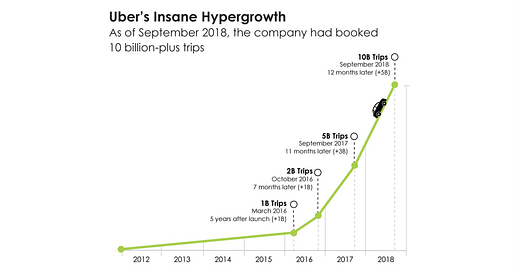A guide to growth design - how it builds company success
This is a big trend for companies to hire Growth Designers drive growth and what it means for a Growth Designer to be in a team.
👋 Hello! Welcome to this week’s ADPList’s Newsletter; 🔒 subscriber-only edition 🔒 weekly advice column. Each Tuesday, we tackle design, building products, and accelerating careers. We’re looking for sponsors! If you’re interested in sponsoring our newsletter, let’s chat!
Q: Why do designers/PMs need to think growth? And how can companies/I build for this trait?
This is a question that’s been asked and answered many times, but, tbh, I’ve always held a HOT opinion on this. Designers who design, need to learn how to speak business. Else, you won’t get a seat on the table.
Yes, you heard me, good design is not enough if your executive team doesn’t know how it translates to growth (acquisition, retention, and revenue) metrics. Of course, companies will also need to start understanding the role design plays in growth — this goes both ways. Today’s newsletter features Lex Roman (ex-Gusto, Nissan) and wisdom from Dropbox’s Director of Growth Design, Angel Steger. A huge thank you for advocating for growth design and this mysterious topic. 🙏
Growth has long played a vital role in tech. Most companies have growth leads or growth teams and acknowledge on some level that they need growth expertise in-house to help — grow the company.
Meanwhile, design has been an afterthought in the growth discussion.
Countless startups have hired one person, called them a growth hacker, and waited for a magic rain of users and profit. Want a seat on the table? Do design, talk business.
Designers get considered last in these conversations because most don’t know how to communicate the value of design to business (growth needs).
What exactly is, Growth Design?
Growth design is a discipline that combines product design, data analytics, and marketing to create products that drive user acquisition, retention, and revenue. It’s about creating a seamless user experience that encourages users to take specific actions that lead to growth.
Growth Designers are full-stack Product Designers, which means they can:
Run customer development and develop deep customer understanding
Think through a system and visualize the experience
Identify problems in the system
Design solutions (from interaction flow to user interface)
Virality comes from designing value
Companies that understand growth are leveraging designers (by title or not) as strategic contributors. Successful companies like Uber and Tinder have always intertwined growth with product. Both achieved scale by offering:
Scale = Better + Faster + Cheaper + More VC funding.
As growth has matured, there’s been much more thought into how to best hire into your team. However, many founders and product leaders continue to wrestle with where design fits in. To this day, it still seems to be the last consideration for most companies.
Think about companies we know and love — Airbnb, Lyft, Netflix, Squarespace, Dropbox, MailChimp, Shopify, Intercom. Their secret is that they’ve found ways to deliver value to customers in ways that fuel virality.
Virality = Value + Distribution (mass adoption)
They are not just throwing a ton of money at Ads or changing a button from green to blue. They are using system-wide design thinking to find levers they can pull to drive massive growth.
How to hire Growth Designers?
Before hiring a growth designer, consider the biggest opportunities your product has and how critical it is that you get growth right. The level and type of opportunity will determine who you need on your team.
Designers can have depth in any area of practice — research, visual, motion, visual, branding, etc. Growth belongs in that set.
What makes them Growth Designers:
Drive growth outcomes — they continually seek high-impact work. This may take shape in the form of user research, in new ideas paired with validation plans, or in prioritization discussions.
Balance biz growth and user problems — as designers, they are focused on problem-solving not just for the users. They understand that you can’t solve user pain if your business goes under. They also believe great design is valuable, and they can prove it.
Experiment and de-risk design — through feature-level experiments or with A/B tests. They also have experience and ideas about how much design is enough to ship. Not everything needs validation and sometimes you can over-experiment— they have experience and perspectives on this.
Care deeply about the impact of their work — they know a substantial amount about metrics and tracking them. They value getting things into the hands of customers so the impact is clear.
🚨 Common Myth: While growth design may include some marketing work, growth and marketing are not the same thing. Marketing tends to be acquisition focused while growth can happen at any point within the experience.





